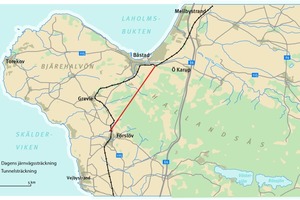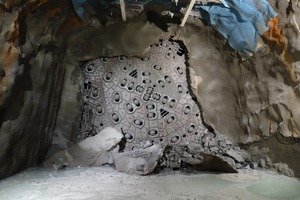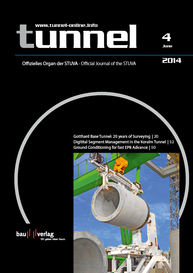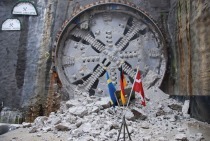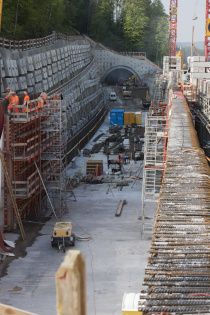Hallandsås Rail TunnelExtreme Excavating Conditions
The Malmö-Göteborg rail line, one of the country’s arteries for passenger and goods traffic, has been upgraded as a high-speed route, which will reduce travelling time between the two centres by two hours. As the Hallandsås heights could only be crossed with a single-track operation, the two-bore Hallandsås Tunnel is intended to considerably increase the route’s capacity. After an attempt to produce a tunnel by mining means failed, a mechanized drive for this sophisticated tunnel was successfully concluded at the end of 2013.
On account of the geology the project occupies a leading position worldwide among tunnelling projects involving highly complex ground: the extremely abrasive rock formations (mainly gneiss and amphibolite) with high rock strengths of up to 250 MPa are for the most part highly fissured; at the same time, extreme groundwater pressures in excess of 10 bar posed a burden on the structure over lengthy sections. Earlier attempts at tunnelling had been thwarted by this hurdle and led to strict environmental restrictions, which for example limited the amount of groundwater to the litre, which is permitted to flow between Förslöv and Båstad.
For the mechanized driving of the two remaining sections – each 5.5 km in length – of the 8.7 km long Tunnel, the Herrenknecht AG devised a specially adjusted TBM (Multi-mode TBM, S-246) with 10.53 m diameter, which operates both in closed slurry mode with hydraulic muck removal as well as in open hard rock mode with belt conveyance. Firmly fixed drilling and grouting tools catered for cement grouting to ensure that ingressing water could be controlled. The machine’s sealing system was devised for groundwater pressures of up to 13 bar.
The Swedish-French JV consisting of Skanska and Vinci began driving the first, eastern tunnel in September 2005. The best results were attained in open mode with cement injections, which held back the groundwater. The partial high abrasiveness and the in some cases blocky rock caused extremely high material wear at the cutterhead and correspondingly frequent servicing and tool replacing intervals. Time-consuming cement grouting and the necessary service intervals restricted the rate of advance. The breakthrough into the cavern of a conventionally excavated intermediate point of attack took place in spring 2008. At this point, the severely worn cutterhead was fitted with larger cutters (19” instead of 17”). In August 2010, the first bore (5480 m) was excavated. The TBM was thoroughly redeveloped for driving the second, western tunnel. The excavation of the second bore commenced from Förslöv in the direction of Båstad in February 2011, where the breakthrough took place on September 4, 2013 after driving 5445 m. After almost eight years of excavation the event represented an outstanding pioneering achievement in building underground infrastructures. G.B.

